Goodford's Folly / Coittage
Goodford's Folly / Cottage
Mudford Road
As far as I'm aware today there is no official name for this cottage in Mudford Road, but it was built by, and belonged to, the Goodford family of Yeovil and Chilton Cantelo. It was referred to as Goodford's Folly in the 1841 and 1851 census returns (presumably because it was such a large cottage and also so isolated). It was named as Goodford's Cottage in both the 1861 and 1871 census returns.
The cottage still stands today, end-on to the Mudford Road, shortly before the bend in the road at Hundredstone where Stone Lane and Combe Street Lane join Mudford Road. At one time the cottage was the only building in the area as seen on the Tithe Map of 1846 shown below. It was built in 1821 for an estate worker and a datestone over the entrance carries the arms of Goodford impaled with Cholmeley and the date of 1821 below a ribbon carrying the initials of G and C.
As seen in the first photograph below, dating to about 1890, the cottage (like many of the buildings in Yeovil at the time) was thatched and has since had substantial alterations. Originally, as seen on the map, a track ran alongside the cottage which gives a clue as to why today the cottage appears to be end-on to Mudford Road. The track gave access to fields but also joined Mudford Road with Brickyard Lane (today's St Michael's Avenue). The track has long since disappeared.
John Goodford, Esq. was born on 24 December 1784 and was married on 4 January 1810 to Charlotte, fourth daughter of Montague Cholmeley, Esq. of Easton, Lincolnshire. John Goodford, always described as a gentleman, left Yeovil to live in the manor house at Chilton Cantelo, but continued to interest himself in town affairs. John and Charlotte had six children; Henry (b1811), Charles Old (b1812), Montague John (b1822), Mary Ann (d1833), Maria and Penelope. Henry Goodford succeeded his father in 1787. He was an active magistrate for the counties of Somerset and Dorset, and a Deputy Lieutenant and Chairman of the Quarter Sessions in Somerset. He was Sheriff of Somerset in 1816. The family began acquiring lands from 1715 and by the 1810s held the manors of Chilton Cantelo, Old Sock and Mudford with lands in Yeovil, Preston Bermondsey, Preston in Stone and Ashington.
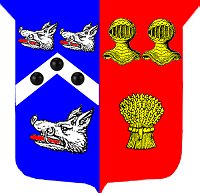 The
Goodford arms
were azure on a
chevron between
three boars'
heads argent
langued and
couped gules as
many pellets -
in other words,
on a blue
background, a
central silver
chevron with
three black
roundels set
between three
boar's heads
(two above the
chevron, one
below) with red
tongues, the
heads cut
short.
The Cholmeley
arms were
gules, two
helmets in chief
and a garb in
base or - in
other words, on a
red background
two gold helmets
at the top over
a gold sheaf of
corn at the
bottom.
The
Goodford arms
were azure on a
chevron between
three boars'
heads argent
langued and
couped gules as
many pellets -
in other words,
on a blue
background, a
central silver
chevron with
three black
roundels set
between three
boar's heads
(two above the
chevron, one
below) with red
tongues, the
heads cut
short.
The Cholmeley
arms were
gules, two
helmets in chief
and a garb in
base or - in
other words, on a
red background
two gold helmets
at the top over
a gold sheaf of
corn at the
bottom.
In the Yeovil Tithe Apportionment of 1846 it was noted that the Cottage & Gardens (Parcel 1041) was owned by Yeovil attorney Henry Goodford (the son of John Goodford and Charlotte née Cholmeley) and occupied by Phillis Coles. Goodford owned extensive lands in Yeovil and Preston in Stone (for a map click here) which was farmed by Phillis Coles of Stone Farm. The cottage here under discussion would have been occupied by a farm worker and his family.
It is not possible to identify the cottage in the 1841 census return although it is referred to in the preamble. However the 1846 Tithe Apportionment notes that the cottage, Parcel 1039, was owned by Henry Goodford (of Chilton Cantello) and was leased by Phillis Coles, who farmed Stone Farm. She clearly sub-let it to one of her farm workers.
It is recorded in the 1851 census and was home to farm labourer Joseph Elliott, his glover wife Matilda, their 12-year old son James, also a labourer, 9-year old Elizabeth who worked as a glover like her mother and two smaller children, George and Robert, who were listed as 'at home'.
In the 1861 and 1871 census returns it is referred to as Goodford's Cottage. In 1861 it was occupied by farm labourer John Norris, his wife Martha and their children; John, George, Mary, Ambrose, Sarah Ann and June. Lodging with them was farm labourer George Rendall. In 1871 it was occupied by agricultural labourer Mark Hilborne, his wife Sarah and their children; Sarah, Martha, William, George, Frank and Walter.
map

This is a
section of the
1842 Tithe Map
of Yeovil with
Mudford Road
running up from
bottom left then
turning right at
the junction
with Combe
Street Lane
(running from top
left) and Stone
Lane (running to
top centre)
before running
off to centre
right. The
cottage, marked
in red just left
of centre, is
the only
building in the
area. Parcel No
1041 was a field
called Beacon -
recalling the
days when the
field was the
site of the
Elizabethan
beacons. By
this time a
plantation
(Parcel 1040)
had been made
out of the
eastern end of
Beacon and the
cottage was in
the
north-western
end of this
plantation. The
track running
alongside the
cottage and
eventually
joining up with
Brickyard Lane
(today's St
Michael's
Avenue).
gallery
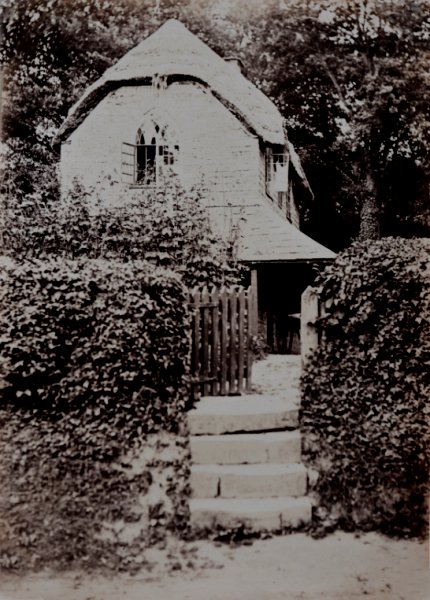
The cottage, photographed from Mudford Road around 1890, when it was thatched.
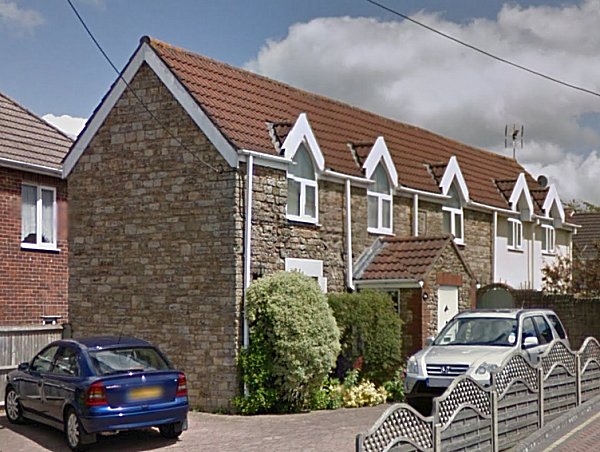
.... and photographed in 2014.
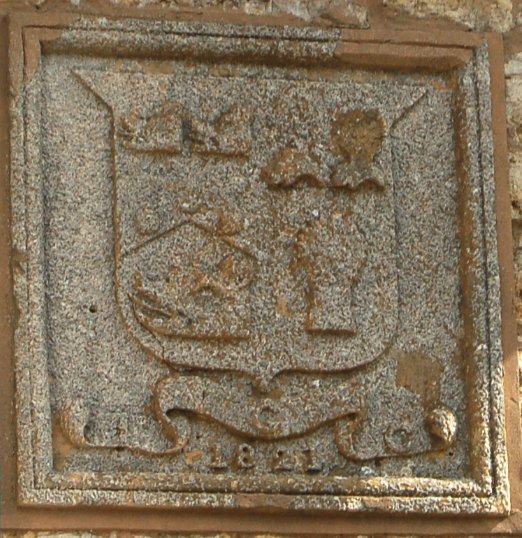
The 1821 datestone. The datestone is seen in the photo of the cottages above just above the entrance extension roof and to the immediate right of the third rainwater downpipe. The arms are of Goodford impaling Cholmeley. Photographed in 2014.
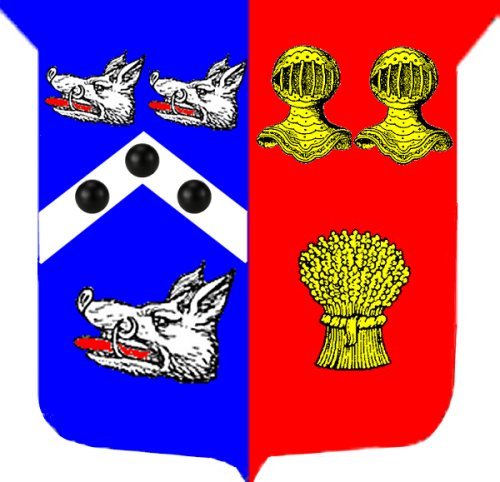
Sketch of the arms of Goodford impaling Cholmeley for comparison.